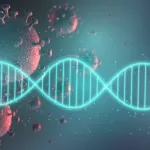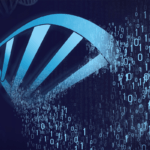Gametes are specialized male (sperm) and female (egg) cells that unite during fertilization to create a zygote, promoting genetic diversity and enabling sexual reproduction.
Gametes: Nature’s Matchmakers for Sexual Reproduction
Introduction to Gametes
Gametes, often called “reproductive cells,” are nature’s specialized envoys for sexual reproduction. These unique cells play an indispensable role in perpetuating life on our planet. In this comprehensive exploration, we will delve deep into gametes’ structure, functions, and significance in the context of sexual reproduction.
Male and Female Gametes: Sperm and Egg Cells
Sexual reproduction is a process in which two individuals, typically of different sexes, come together to produce offspring with a combination of genetic traits from both parents. Male and female gametes are the key players in this intricate reproductive dance.
- Male Gametes – Sperm Cells: Male gametes are known as sperm cells and are produced within the male reproductive system. Sperm cells are tiny, streamlined structures designed for a single-minded mission: to fertilize an egg. Each sperm cell has three main parts: a head, a midpiece, and a tail. The head contains the genetic material (DNA) in a compact form. The midpiece is packed with mitochondria, which provide the energy needed for the sperm’s journey. The long, whip-like tail serves as a propeller, enabling the sperm to swim toward the egg.
- Female Gametes – Egg Cells (Ova): Female gametes are more commonly known as egg cells or ova (singular: ovum). These are the largest cells in the human body, visible to the naked eye. Unlike sperm, which are numerous and constantly produced, women are born with all the eggs they will ever have, and these mature and are released periodically. The egg cell is rich in nutrients and contains half of the genetic material necessary for the formation of a new individual. When fertilized by a sperm cell, it initiates the development of an embryo.
Anisogamy vs. Isogamy
An intriguing aspect of gametes lies in the variations between species. In anisogamous or heterogamous species like humans, males and females produce gametes of different sizes. For instance, a human ovum is approximately 100,000 times larger than a single human sperm cell. This size difference is a defining characteristic of sexual reproduction in many species.
In contrast, isogamy is a state where gametes from both sexes are of the same size and shape. Species practicing isogamy assign arbitrary designators for mating type rather than designating specific sexes.
Fertilization: The Union of Gametes
The primary role of gametes is to bring together the genetic material from two individuals, one male and one female. Fertilization, also known as conception, is the process by which a sperm cell and an egg cell combine to form a zygote. The zygote is the first cell of a new organism and contains a complete set of genetic instructions from both parents.
Fertilization typically occurs in the female reproductive tract, often in the fallopian tube. The journey of the sperm is arduous, as they must navigate through the female reproductive system to reach the egg. Upon successful fertilization, the genetic material from the sperm and egg merges, creating a unique combination of genes that will determine the traits and characteristics of the offspring.
Meiosis: Preparing Gametes for Fertilization
The process by which gametes are produced is called meiosis. Unlike regular cell division (mitosis), which results in two identical daughter cells, meiosis is a special form of cell division that reduces the chromosome number by half, ensuring that the offspring will inherit half of their genetic material from each parent. In humans, this means that gametes have 23 chromosomes instead of the usual 46 in somatic cells.
- Meiosis in Males: In males, meiosis occurs continuously throughout life, resulting in the production of millions of sperm cells. Each sperm cell produced during meiosis is unique, due to the random assortment of genetic material and recombination of DNA that happens during the process.
- Meiosis in Females: In females, meiosis begins before birth, as all the primary oocytes (immature egg cells) are formed during fetal development. However, meiosis in females pauses and resumes only after puberty and each menstrual cycle. At this point, one primary oocyte completes meiosis, producing a single mature egg cell (ovum) and three polar bodies that do not contribute to fertilization.
Significance of Genetic Diversity
The diversity of offspring produced through sexual reproduction results from the random assortment of genetic material that occurs during meiosis. This genetic diversity is of paramount importance in the evolution of species. It enables populations to adapt to changing environments and challenges, as well as contributing to the uniqueness of each individual.
Sex Determination
In the realm of mammals and birds, sex determination relies on distinctive mechanisms. Humans and most mammals utilize the XY sex-determination system, where an ovum carries only an X chromosome, and a sperm may carry either an X or a Y chromosome. The combination of these sex chromosomes determines the sex of the resulting zygote. Two X chromosomes result in a female, while an X and a Y chromosome lead to the development of a male.
For birds, the ZW sex-determination system is in play, where the female’s ovum determines the sex of the offspring.
Artificial Reproductive Technologies and Gametes
Advances in science and medicine have expanded our understanding of gametes and their use in artificial reproductive technologies. These technologies include in vitro fertilization (IVF), intracytoplasmic sperm injection (ICSI), and egg donation. They allow individuals and couples facing fertility challenges to have children.
IVF involves the collection of both sperm and egg cells, which are then fertilized in a laboratory setting. Once embryos develop, they are implanted in the female’s uterus. ICSI is a specialized form of IVF in which a single sperm is directly injected into an egg. Egg donation allows individuals who cannot produce viable eggs to use donated eggs to conceive.







